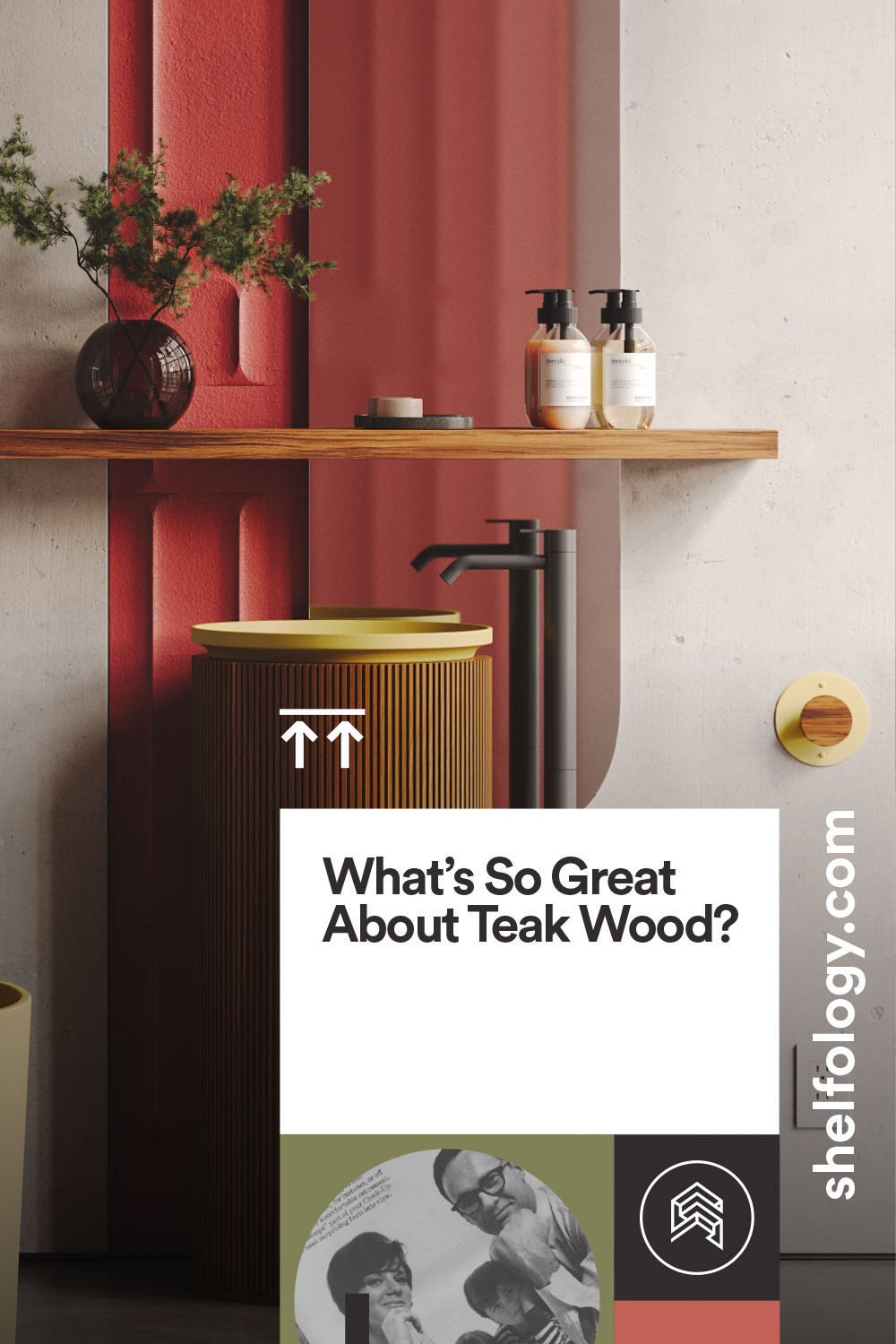On a sunny June afternoon, my brother Jason maneuvered a 20-foot box truck into my parking spot. He had come with good news: a beautiful mid-century modern teak dresser set I inherited. The precious family heirloom had remained in our family for years and had even survived a flood, unlike other furniture in my father’s home. The dressers had resisted water and moisture caused by the flood due to the natural oils in teak wood that make the surface water resistant.
I had patiently waited a year for my teak dressers to arrive due to Covid travel and transport restrictions. But using a temporary storage solution until the delivery was well worth it. Jason put the gear shift in park and raised the roll-up door to reveal my prized possession wrapped in blankets. When we uncovered them, the dressers stood as solid and sturdy as I remembered. The finish still shined atop a golden brown color and grain patterns with a light silver patina that comes with aging teak.
As far as teak goes, genuine teak timber is in high demand because of its high quality and can be tough to access. But that didn’t stop the folks at Shelfology from sourcing the premium wood for its line of Aksel teak floating shelves from an FSC-certified supplier. Recognized for its strength and natural beauty, the following factors make teak a premium hardwood.

What’s So Special: What Makes Teak a Premium Hardwood?

Known as “the king of woods,” teak (Tectona grandis) is a tropical hardwood species reputed to be among the toughest and most durable hardwoods worldwide. The tall, deciduous tree grows in South Asia and Southeast Asia, specifically Burma, India, and Indonesia. Teak trees can climb as high as 150 feet tall and grow for 100 years. Teak is water resistant, holds up to weathering, and is impervious to insects, unlike other woods. If you’re considering installing floating shelves in an outdoor living area, teak is an excellent option.
Teak Displays a Beautiful Appearance and Mild Scent

The inherent beauty of teak comes from its beautiful coloring, splendid grain patterns, and the wood's natural shine. Let’s examine the qualities of teak.
Color: You can identify teak by its stunning golden brown or honey-like color, which can vary based on country origin and the age of the wood. Over time, teak wood can develop a lovely light-silver patina.
Grain: Teak wood typically features straight lines but can also display curvy or interlocked grain patterns. The unique grain contrasts make teak wood visually appealing.
Natural oils: Silica and other natural oils in teak wood give the surface a subtle shiny texture and luster. The natural oils in teak wood are one way to identify a genuine teak product compared to an imitation.
Fragrance: Another characteristic that helps one identify teak wood is its smell. Teak wood has a slightly sweet woodsy and earthy scent. Some have compared the smell to leather; others to tobacco. If the wood marketed as teak has a strong smell or none at all, the wood is unlikely authentic teak.
A Hardwood With High Durability and Strength

Beyond its natural beauty and subtle fragrance, teak wood is one of the most robust and durable hardwoods. For this reason, teak has been the preferred wood of shipbuilders for thousands of years. Due to its scarcity and price point, boatbuilders use teak to construct the trim on yachts and fishing boats today. What makes teak durable is its high mineral content, tight grains, natural oils, and rubber that protects the wood from water, wear, and rot.
The Ultimate Heavyweight (no MDF here)
When it comes to density, teak wood weighs more than other woods. A sure way to know if the product is the real McCoy is to hold it. If the wood feels light for its size, it could be an imitation. Some unscrupulous retailers have stained inferior and cheaper woods in teak colors and marketed them as teak wood, so be sure to learn the source before making a purchase.
Teak Is Sustainable and Eco-friendly
Aksel Teak floating shelves are sourced from FSC-Certified teak forests. The Forest Stewardship Council is a non-profit organization that places rigorous standards on forests to ensure the wood is eco-friendly and responsibly harvested. Among these standards include:
- Sustainability of forest management
- Wildlife protection
- Prevention of deforestation
- Reduction of greenhouse gases
How To Know If a Teak Product Is Authentic

Apart from the fragrance and shine, you can tell the authenticity of teak wood by its country of origin. Genuine teak wood comes from Myanmar (Burma), Indonesia, and India. The origin should be noted on the label or in the retailer’s literature. Although some sellers will be upfront and tell you a product isn’t genuine teak, others will omit the country of origin from the label or product description. If you need clarification about the source, always ask. Shopping from a trusted source that can ensure quality and authenticity is always your best bet.
How To Care for Teak Wood

Teak wood requires little maintenance. The following cleaning and care tips can help keep your Aksel floating shelves beautiful for many years.
Materials:
- Dusting cloth
- Soft bristle brush or soft cloth (never use steel wool as it can scratch the wood)
- Bucket
- Teak cleaner, baking soda, mild detergent, or vinegar/water solution
- Sealer if needed
Teak Wood Cleaning and Care Steps:
1. Clear off books and accessories from your floating shelves.
2. Remove dust and loose dirt from plants with a soft cloth or duster.
3. Use a soft brush or cloth with a teak cleaner or a mixture of warm water and mild detergent, vinegar, or baking soda. (Never use bleach or ammonia on teak as it can strip the natural oils and fade the color of the wood.)
4. Follow the grain of the wood as you clean.
5. Empty your dirty water and fill the bucket or container with clean water.
6. Wet a clean towel or cloth and remove the soap.
7. Let the surface dry.
8. If needed, apply a teak sealer product according to the manufacturer's instructions.
9. Let the sealer dry.
10. Replace your books and decor.
To keep the appearance of your teak floating shelves pristine for years to come, always wipe up spills immediately to prevent stains. You wouldn’t want liquid from a beverage or overwatered plant to leave a stain.







